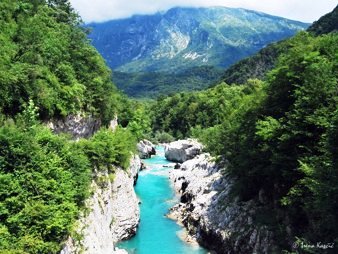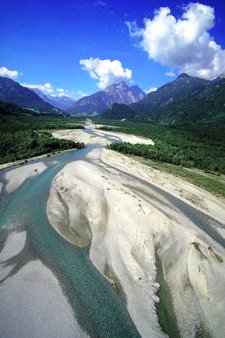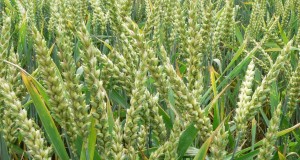
Gland, Switzerland – Only one in ten Alpine rivers is healthy enough to maintain water supply and to cope with climate impacts, according to a report by WWF. The publication is the first-ever comprehensive study on the condition of Alpine rivers.
The landmark WWF study, “Save the Alpine Rivers”, found that only 340 kilometers of large Alpine water systems remain ecologically intact compared to 2,300 kilometers of heavily modified or artificial stretches of river.
“Healthy rivers, streams, wetlands and floodplains provide a suite of ecosystem services including fresh water and flood protection,” said Christoph Litschauer, Head of WWF’s European Alpine Freshwater Program. “These systems are essential for human livelihood. Beyond basic services, we also have to look at healthy natural rivers as one of our best insurance policies against climate change.”
The high mountain ranges of the Alps function as water towers for 14 million people from eight countries. The rivers that drain these mountains provide household and agricultural water, food, fisheries, energy, jobs and recreation.
The study, carried out with Vienna’s University of Natural Resources and Life Sciences, assesses the current status of 57,000 kilometers of river and found 89 out of 100 Alpine rivers are already substantially harmed. Only 11 per cent of rivers are in pristine condition, with the rest having been redirected, altered or impacted by hydropower dams.
“Many planned hydro-dams are situated in protected areas like the Soca in Slovenia or on pristine rivers like the Isel in Austria. These counteract current protection efforts,” continued Litschauer. “Rivers are more than mere energy suppliers; they need to be seen for the complete natural services they provide.”

In addition to damming and regulation of rivers, Alpine riverbanks are being converted to agricultural land and urban areas, reducing their natural ability to regulate floods.
Climate change was also identified as a threat to Alpine rivers in the report. This adds to the results of a separate study conducted for the Austrian government that found that temperature increase in the Alps is much higher than in other regions of the world. The temperature in the Alps has risen by 2°C within the last 200 years, far above the average global temperature increase of 0.85°C.
Following the costly and catastrophic floods that hit Europe in the past few years, WWF highlights the need to strengthen the resilience of water ecosystems and is calling on governments to prepare an action plan to protect and restore these rivers.
“Extreme weather events are increasingly likely and we must protect and strengthen the capacity of our ‘green infrastructure’ including living rivers and wetlands. The environment is changing and we must respond,” said Litschauer.
Despite being one of the most densely populated mountain ecosystems in the world, the Alps contain a variety of unspoiled wild places and are important for biodiversity. The WWF study defines no-go areas for hydropower plants and highlights river stretches for future restoration projects.
Click here to read/download the Full Study.
Source: WWF.


















